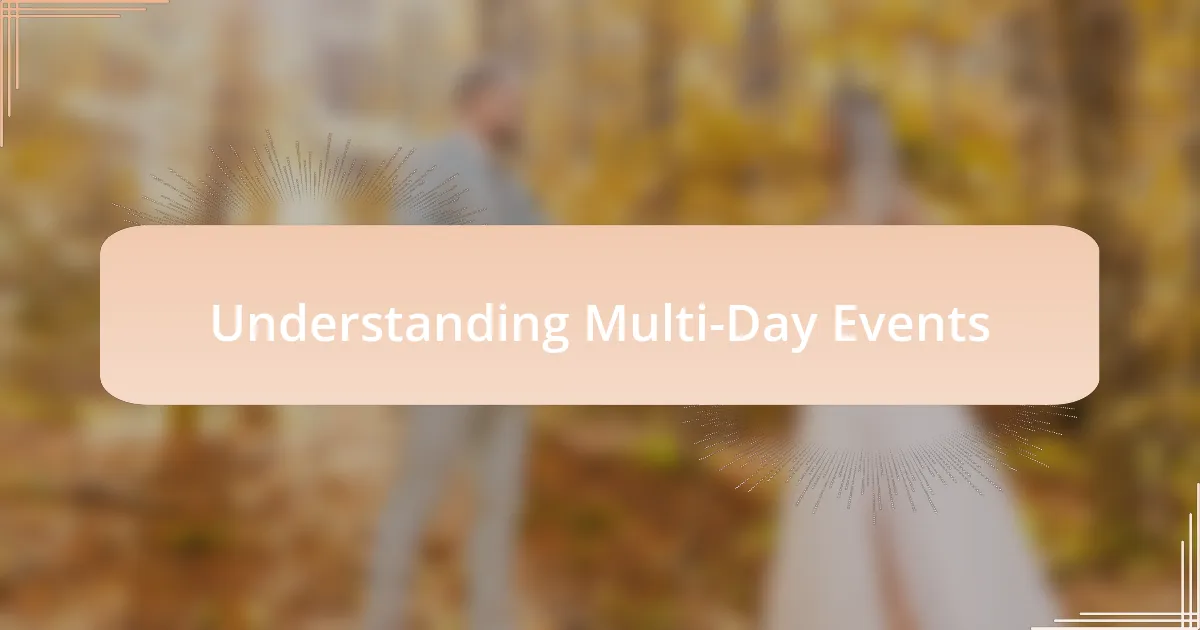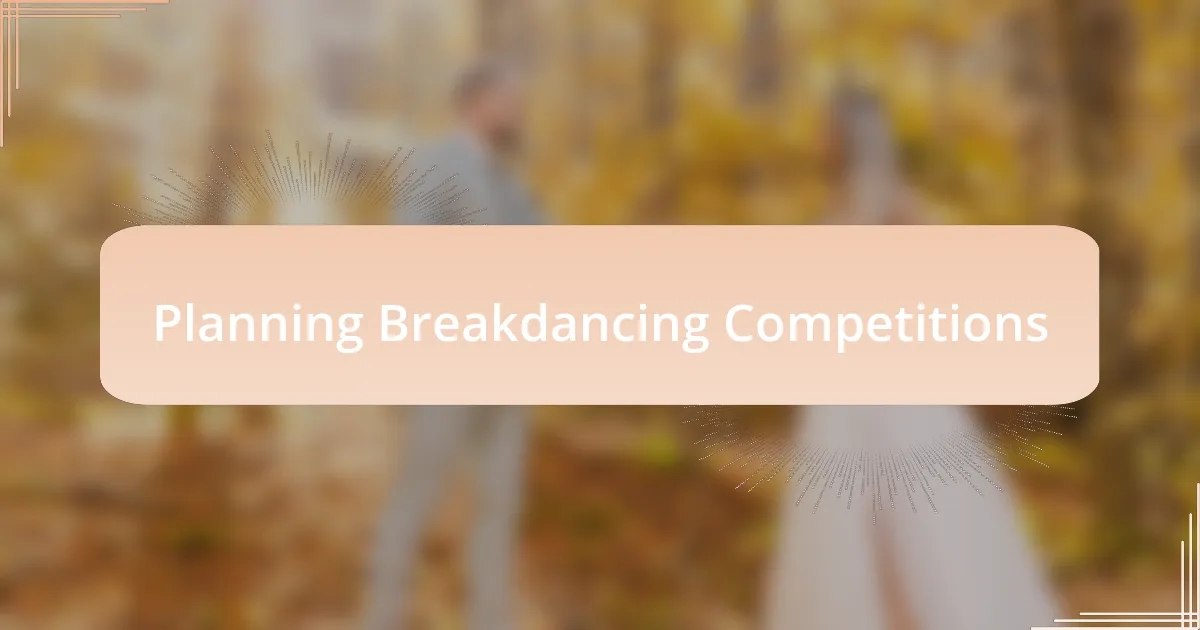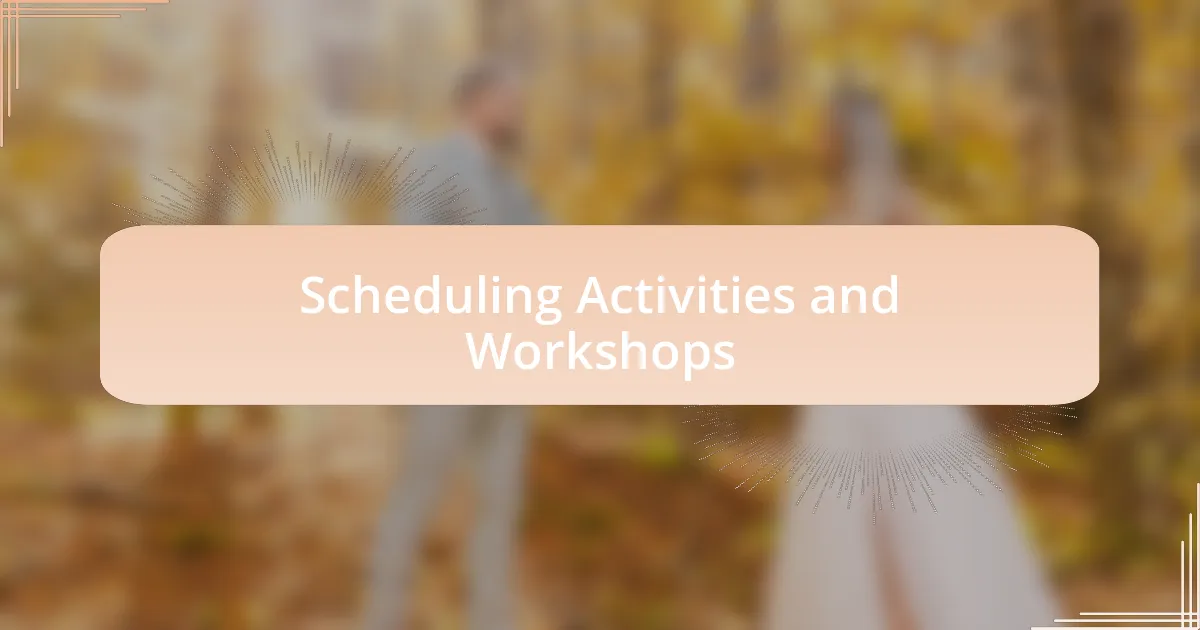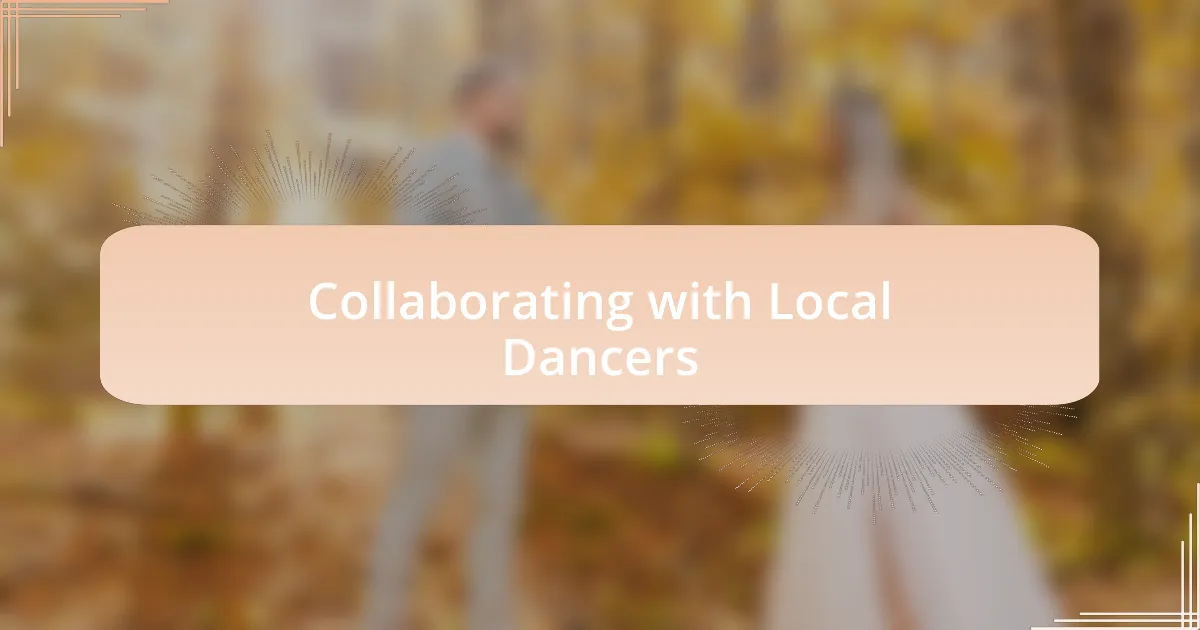Key takeaways:
- Multi-day events foster community connections and resilience, enhancing participant experiences through shared passion and creativity.
- Community engagement during planning improves event quality, creating inclusive atmospheres and nurturing talent.
- Effective scheduling accommodates various skill levels and includes downtime for spontaneous collaborations, enriching the overall experience.
- Adaptability and feedback are crucial for successful events, transforming challenges into opportunities for growth and connection.

Understanding Multi-Day Events
Multi-day events are a fascinating blend of logistics, camaraderie, and excitement that truly test the spirit of any community. I remember feeling a mixture of adrenaline and anxiety as I watched the crowd grow over several days—I realized that each participant brought a unique energy that enriched the experience for everyone. Isn’t it amazing how these events can spark connections among strangers who share a common passion?
Organizing a multi-day event requires a clear vision and meticulous planning. From scheduling battles to coordinating breaks, each detail intertwines to create a smooth experience. I learned this firsthand when I had to adjust the lineup after a sudden rainstorm; the creativity of the b-boys didn’t waver, and in that moment, I saw true resilience shine through the community.
Beyond logistics, multi-day events cultivate an atmosphere of growth and learning. I vividly recall the intense workshops where seasoned dancers shared their wisdom with eager novices; it was like watching a beautiful cycle of mentorship unfold. Have you ever stood in a circle, surrounded by the beats of the music and felt the weight of collective aspiration? Moments like those remind us why we convene, and their impact often lingers long after the event ends.

Importance of Community Engagement
Engaging the community is crucial for the success of any event, particularly in a vibrant culture like breakdancing. I still remember how the genuine enthusiasm of the local dancers transformed my event from a simple competition into a festival of creativity. Have you ever felt that electrifying energy when everyone is united for a common cause? It’s that collective spirit that fuels passion and fosters connections.
When I involved the community in planning stages, feedback transformed my ideas into something far greater than I could have imagined. There was this one instance where a participant suggested a freestyle battle format, which brought unexpected excitement and allowed for spontaneous creativity. The willingness to listen and implement ideas from the very people who are part of the scene made all the difference, creating an inclusive atmosphere that everyone relished.
Community engagement also fosters support systems that help dancers thrive both on and off the floor. I witnessed this first-hand when a group of b-boys rallied to organize impromptu practice sessions, nurturing talent that might otherwise go unnoticed. Isn’t it incredible how support can grow organically, shaping the future of breakdancing? Events become more than just competitions; they evolve into nurturing spaces where friendships blossom, and skills flourish.

Planning Breakdancing Competitions
Planning a breakdancing competition involves a lot of moving parts, but I find it most effective to start with a clear vision. When I began organizing my first event, I was amazed at how essential it was to outline not just the competition structure, but also the vibe I wanted to create. What kind of atmosphere do you envision for your event? For me, it was about blending intensity with a welcoming spirit, which I addressed right from the planning stage.
One of the most surprising aspects of planning that I learned was the importance of flexibility. Originally, I had a strict timetable of battles and performances, but I quickly discovered that the dancers needed space to express themselves. I recall a moment when a b-girl suggested extending the battle rounds to include more creative combos. Adapting on the fly not only enriched the competition but also made participants feel valued and heard. Isn’t it fascinating how collaboration can breathe new life into established plans?
Additionally, I found that securing the right venue was pivotal for setting the tone of the competition. I once chose a space that felt more like a local gym than a stage for artistry. After that experience, I committed to finding places that resonate with the culture—places where the energy of breakdancing can truly thrive. Have you considered how the venue will reflect the spirit of the community? It really shapes the experience for everyone involved, from the dancers to the audience.

Scheduling Activities and Workshops
When scheduling activities and workshops, I learned that considering the different skill levels of participants is crucial. I remember my first experience where I offered all-level workshops back-to-back. It was rewarding to see seasoned dancers mentoring newcomers, but it was also chaotic. Carefully segmenting sessions helped everyone feel comfortable, leading to a more engaging environment. Have you considered how your schedule could encourage mentorship within your community?
Another key insight for me was integrating time for impromptu battles. I once had a packed schedule, with hardly any breaks, and quickly realized dancers often needed those moments to recharge and connect. By creating open blocks where participants could share their creativity, I saw spontaneous collaborations blossom. Isn’t it amazing how the best ideas can spark during downtime?
Lastly, collaborating with local dance instructors and community leaders has transformed my scheduling process. During my second event, their input helped reschedule workshops to coincide with peak energy times—instead of mid-afternoon lulls. That adjustment made a noticeable difference in engagement, and I could sense the excitement in the air. How can you leverage local talent to enrich your event’s schedule?

Collaborating with Local Dancers
Collaborating with local dancers has been one of the most rewarding aspects of my events. I vividly remember connecting with a talented group at a community jam. We spent hours discussing what we could bring to the event, and their enthusiasm was contagious. Their unique styles and insights not only shaped the workshops but also ignited a sense of ownership among the dancers. Have you ever felt that spark of creativity when working alongside passionate individuals?
In another instance, I teamed up with a local crew to design a showcase. We met regularly to brainstorm ideas and choreograph routines, which deepened my appreciation for their craft. It was fascinating to watch how each dancer brought their personal flair to the collective effort. The final performance wasn’t just a display of skill; it was a celebration of our collaboration. I still get chills thinking about how we united our strengths to create something truly special. How often do we allow ourselves to blend talents with those around us?
Additionally, I’ve learned that fostering strong relationships with local dancers means actively listening to their needs and aspirations. During one planning session, a dancer shared their dream of leading a specific workshop. I took that to heart and made it happen, watching them thrive in the spotlight. Seeing their confidence grow filled me with pride and reminded me of the impact our events can have on individual journeys. Have you explored how empowering local talent can elevate your community’s spirit?

Marketing the Event Effectively
There’s something truly powerful about utilizing social media to promote events. I remember the excitement I felt when I created a dedicated event page on platforms like Instagram and Facebook. It allowed me to share behind-the-scenes glimpses, highlighting local dancers and creating buzz. Have you ever noticed how quickly a well-timed post can ignite conversation?
Email marketing also played a significant role for me. I compiled a list of interested participants, and I can still remember the sense of anticipation as I crafted an engaging newsletter. The key was to strike a balance between informative and personal; I included stories about the dancers and sneak peeks of what attendees could expect. Did you know that personalized emails can boost engagement rates significantly?
Finally, I discovered that partnerships with local businesses could amplify my reach. For one event, I collaborated with a nearby café to offer discounts to attendees, creating synergy that benefited both parties. Reflecting on that experience, I realized how these connections not only expanded our audience but also fostered a sense of community support. Have you explored the potential of local partnerships in your promotional efforts?

Personal Reflections and Lessons Learned
Looking back, one of the most significant lessons I learned was the importance of adaptability. During the event, we encountered unexpected challenges, like a sudden rainstorm that forced us to move activities indoors. I remember feeling a mix of frustration and determination as I quickly recalibrated the schedule. This experience taught me that flexibility can transform potential disasters into opportunities for creativity and collaboration. Have you ever faced a situation that required you to pivot on the spot?
Another profound reflection stems from the camaraderie I witnessed among the participants. One evening, after a long day of competitions, a spontaneous breakdancing circle formed. I was genuinely moved watching dancers from different backgrounds encourage each other. It reinforced my belief that these events are about more than just competition; they’re about building connections and a supportive atmosphere. What moments have made you feel a sense of belonging within your own community?
Lastly, I realized the value of feedback. After the event, I took time to discuss with attendees their experiences and suggestions. I was surprised by how many had insightful ideas that I hadn’t considered. Gathering feedback not only helps in improving future events but also fosters a deeper connection with the community. It made me wonder – how often do we seek input from those we aim to serve?